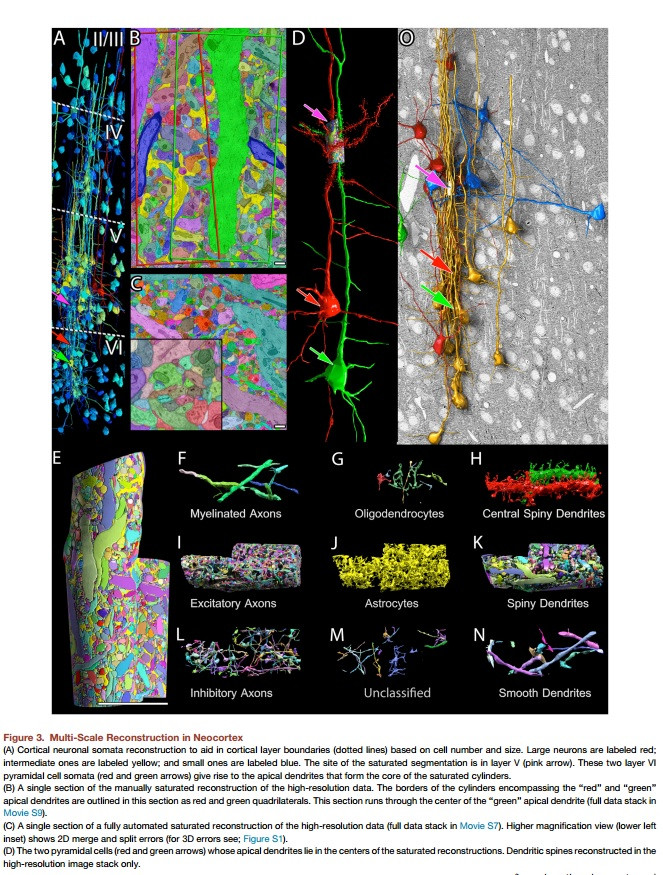Stunning new video allows you to look inside the brain of a mouse in nanoscale resolution
Scientists have developed an imaging tool that allows them to look inside the brain of an adult mouse at a nanoscale resolution never previously achieved. The team at Harvard University who developed the tool say it has the potential to do for the brain what telescopes did for space exploration.
In films released by the scientists, researchers looked inside the brain of an adult mouse at an area that receives sensor information from highly sensitive whiskers. This helps mice to orient themselves. Their findings were published in the journal Cell.
They used a programme called Vast to assign different colours to each individual 'object', such as neurons, blood vessel cells and glial. Scientists believe that by looking this closely at brains, they will be able to see exactly what neurological disorders look like as well as see the differences between non-human animals, humans and even individuals.

By being able to compare the physical neuron connections in individuals, scientists would be able to vastly expand our understanding of how brains shape who we are.
Senior study author Jeff Lichtman said: "I'm a strong believer in bottom up-science, which is a way of saying that I would prefer to generate a hypothesis from the data and test it. For people who are imagers, being able to see all of these details is wonderful and we're getting an opportunity to peer into something that has remained somewhat intractable for so long.
"It's about time we did this, and it is what people should be doing about things we don't understand."
Eventually, the team hopes to make the imaging tool available to other scientists to create a national brain observatory.
Narayanan Kasthuri, first author on the study, said: "The complexity of the brain is much more than what we had ever imagined. We had this clean idea of how there's a really nice order to how neurons connect with each other, but if you actually look at the material it's not like that.
"The connections are so messy that it's hard to imagine a plan to it, but we checked and there's clearly a pattern that cannot be explained by randomness."
© Copyright IBTimes 2025. All rights reserved.






















